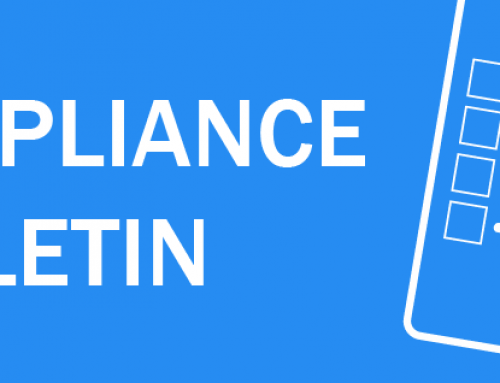Webster’s dictionary explains that a ‘Leitmotif’ (in musical circles) is a melodic phrase that accompanies the appearance of a person, idea or situation. Or to put it another way, it is a dominant recurring theme.
This type of a recurring musical idea is synonymous with the German composer Richard Wagner; but for the most famous Leitmotif, you need to look into the more recent past, 1975 to be precise and the Hollywood blockbuster that was Jaws. I don’t think there is a person alive that isn’t familiar with that repetitious musical phrase.
So why, when the title of this update mentions ‘Product Transfers’ have I chosen to write about musical repetition?
Well, there is one regular reoccurring idea that appears with almost frightening regularity in our Policy meetings. Yes, you’ve guessed it… Product Transfers.
I am told by some advisers that we are out of step with the industry, that other networks don’t ask for so much information for a product transfer, that lender business development managers think our process is excessive and over the top. In short I am told that we need to change our process.
With recent feedback in the forefront of our minds we decided as a policy committee that we needed to review our approach so as to ensure that we were not being over the top in our expectations. We therefore decided that we should approach four key stakeholders in the product transfer process:
- Advisers
- Lenders
- Our PI Insurer
- Our Peers
Here is a summary of some of the feedback received.
Advisers
This was definitely the most mixed group in terms of responses. Some advisers felt that, all that should be required when transacting product transfer business is a phone call or email to gain the clients’ agreement to complete the transfer – no disclosure, no fact find, no research, no documentary evidence and no suitability letter. Others felt that fact finding would be appropriate, but without the need for evidence. Some felt evidence would be a good idea, but only a limited amount. There were also a number of advisers that felt that the current process was fit for purpose and provided them with a necessary degree of protection, particularly considering the litigious climate in which we operate. Verdict: Inconclusive
Lenders
We sent our current procedure out to 13 lenders who offer a remunerated product transfer process; in particular we asked if our process was in line with theirs, the industry and our peers. Their feedback was most useful. For confidentiality reasons I will not name individual lenders or their representatives, but certainly, their feedback has been most helpful.
For the most part lenders chose to remind us the reason why they have elected to remunerate advisers for product transfers. Remuneration reflects the level of work involved.
They expect that advisers package cases and, effectively, act as their envoy or ambassador. Most lenders went as far as to say that they expect advisers to follow an advised process, largely, they are not keen on an ‘execution only’ type process.
Lenders also pointed out that although their process for the transfer might be abridged when compared with their ‘normal’ process, they expect that by the time a product transfer is being undertaken the adviser will have assessed the client’s needs (in line with FCA Know Your Customer requirements), obtained supporting evidence, conducted research and made a recommendation. Some lenders also mentioned that although they do not require certain documents at submission stage, they reserve the right to request evidence of these at a later date. In fact, two lenders, mentioned that they could return to the adviser to request evidence that an advisory sale process had been followed at any stage during the relationship.
In addition, it was reminded that additional borrowing needs should be considered as being part of the overall mortgage advice process.
The general consensus from our lender partners was that our process is not onerous, is in line with our peers and meets their expectations. Further, product transfers deserve the same amount of diligence as a ‘new’ case. Verdict: Full Advice Process
Professional Indemnity Insurer
In order to obtain PI cover, we have to make certain submissions to the insurer. One such submission is the sales process which is followed when dealing with a product transfer. Once submitted, this process forms part of the basis for underwriting the policy, any deviation from this could impact on our policy terms and premium.
I am pleased to confirm that the PI Insurer is satisfied with our current approach to product transfers. Verdict: Full Advice Process
Peers
The financial services industry is a ‘small world’; from time to time we do speak and compare notes, particularly where policy and risk are concerned. Recently I have spoken with other Networks regarding their process for product transfers. They have all said that they treat product transfers in the same way as other mortgage business, namely, they require a full advisory file.
Of particular interest, when speaking to our lender partners, they have explained that they have been collating this sort of feedback from the larger mortgage firms and networks and they too have found that a full sales file is the norm. Verdict: Full Advice Process
Outcome
Surprising though this may be, for a brief moment I have to admit that I was starting to doubt myself, I wondered if perhaps we really were being unnecessarily onerous, however, the communications we have had have only served to convince me that our current product transfer process is, indeed, fit for purpose. So here it is:
Process
So what is expected when you complete a product transfer? Simply put, we request that you complete a full file. The product transfer represents a new advisory sale (TRM does not offer an execution only or non-advised sales route). This means that you must verify that the product transfer is the most appropriate route for the client to take, therefore a full sales process must be followed, including:
- Disclosure
- Know Your Customer
- Research
- Recommendation
- Supporting Documents
Where client circumstances have changed, this should be noted in the fact find and your recommendation should be justified in your Suitability Report to the client.
Conclusion
Whilst I appreciate that this may not be the outcome that some of you had hoped for, I’m sure you can see, by the time and effort that has been put into researching our product transfer process, that we are keen to ’lighten the load’ where possible. We have no desire to make the advisory process any longer or more protracted than it already is.
Just as a leitmotif is used to bring a sense of continuity to a piece of music, or an entire score, this policy review will contribute to a sense of continuity and harmony within the Network.



